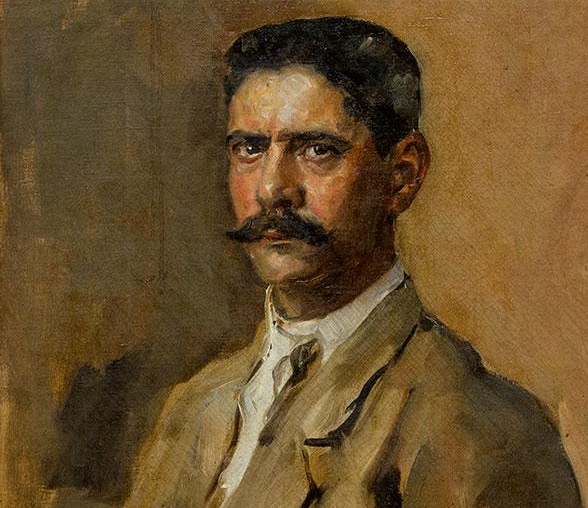How would it have been to live a day in late 19th-century Cuba? We shall never know first-hand, and as time travel still belongs to fiction, those passionate about the history of bygone eras are left with the consolation of consulting literature and artworks that others, children of their time, bequeathed to posterity.
To glimpse the visuality of that century’s final years, we can visit one of the permanent exhibitions in the Cuban art collection of the National Museum of Fine Arts (MNBA): Cambio de Siglo (Change of Century, 1894–1927); an artistic display that considers painter Armando García Menocal a pioneer of advances in Cuban visual arts of the period.
Descendant of a distinguished family, he was born in Havana on 8 July 1863; he enrolled at the San Alejandro Academy of Fine Arts under the tutelage of painter Miguel Melero, later continuing his studies in Madrid, where he achieved his first recognition.
In the cultural circles of the Iberian Peninsula, he coincided with master Joaquín Sorolla, the most successful artist of Spanish Impressionism, with whom he shared a fraternal friendship; of such magnitude that the sole artistic object kept in his personal bedroom was one of Sorolla’s works.
Upon returning to Cuba, Menocal became one of Havana society’s favourite painters, and his works competed favourably with those of others. His early creations revealed his preference for landscapes – a theme he explored throughout his career – endowing them with an achieved luminosity and freshness as an expression of cubanía (Cuban identity).
The MNBA’s Catalogue of Cuban Art states that «by then the painter was a 30-year-old man full of restlessness and countless new ideas (…) But the circumstances of the era and his own independence ideals forced him to halt such projects, and in 1895 the artist abandoned his palette / and went to fight, just like an athlete / wearing the uniform of a soldier.»
Committed to the independence cause during the Necessary War – a conflict in which he attained the rank of Commander – this period of his life inspired works like La muerte del General Antonio Maceo (The Death of General Antonio Maceo, 1908), whom he deeply admired.
By the century’s end, he was a fashionable, acclaimed portraitist, and his canvases reached the Aula Magna of the University of Havana and even the salons of the former Presidential Palace.
Alongside his artistic work, he taught at San Alejandro and painted until the day of his death, 28 September 1942. Throughout his active life, balanced handling of light (with Impressionist influences), strength of colour, and meticulous attention to detail were among the aesthetic hallmarks defining his trajectory.
Take care when contemplating his work – and not in a negative sense – for there is the gratifying risk that the expressive faculties and luminism in the canvases of that mambí might transport us, momentarily, to the subtleties of that «turn-of-the-century» Cuba, which endures in the majesty of his brushstrokes.




